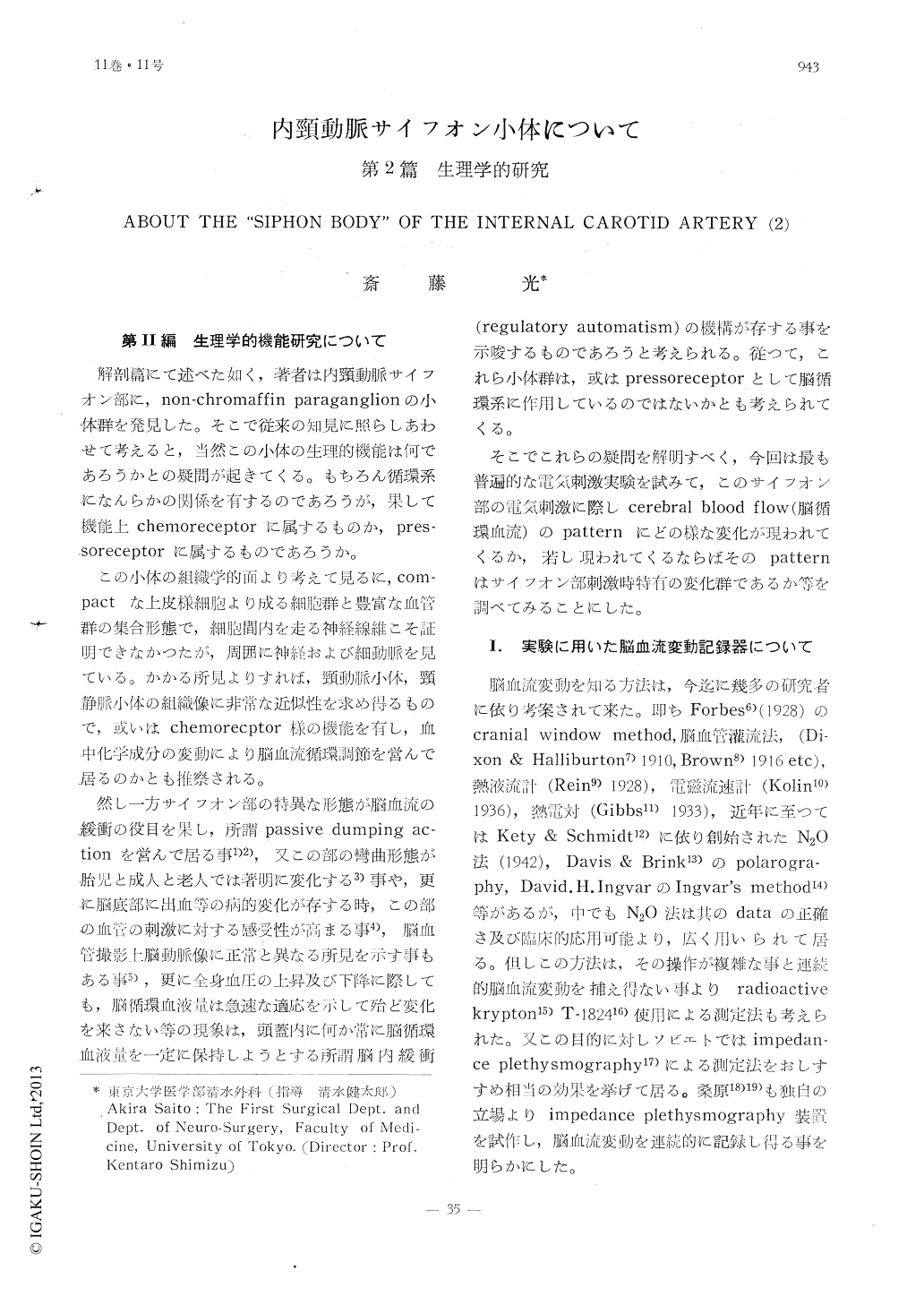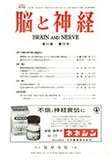Japanese
English
- 有料閲覧
- Abstract 文献概要
- 1ページ目 Look Inside
第II編 生理学的機能研究について
解剖篇にて述べた如く,著者は内頸動脈サイフォン部に,non-chromaffin paraganglionの小体群を発見した。そこで従来の知見に照らしあわせて考えると,当然この小体の生理的機能は何であろうかとの疑問が起きてくる。もちろん循環系になんらかの関係を有するのであろうが,果して機能上chemoreceptorに属するものか,pres-soreceptorに属するものであろうか。
この小体の組織学的面より考えて見るに,com-pactな上皮様細胞より成る細胞群と豊富な血管群の集合形態で,細胞間内を走る神経線維こそ証明できなかつたが,周囲に神経および細動脈を見ている。かかる所見よりすれば,頸動脈小体,頸静脈小体の組織像に非常な近似性を求め得るもので,或いはchemorecptor様の機能を有し,血中化学成分の変動により脳血流循環調節を営んで居るのかとも推察される。
The part of the internal carotid artery cal-led the "carotid siphon" has been attracting our attentin from the anatomical and cereb-ro-circulatory standpoint, because of its pecu-liar curvature.
I made various investigations on the anatomy and physiological functions of the "siphon part".
I. Anatomy
(1) I discoverd the bodies (cell groups) on the wall or in the neighbourhood of the "caro-tid siphon". The bodies may be regarded as non-chromaffin paraganglion.
(2) According to their site and shape, they can be classified into three groups:the fir-st, the second and the third. The body of thefirst group is relatively large, 500-1500mic-ron in size. The bodies of the second and the third groups are relatively small, 80-500 micron in size.
(3) The shape of the body is round or oval or sometimes irregular. The bodies consist of numerous epitheloid cells which are surrounded by a supporting fibrous stro-ma, rich in capillary net-work.
(4) About the distribution of these bodies, there are nearly no differences with respect to sides, age and sex.
(5) We named these cell groups "siphon bodies".

Copyright © 1959, Igaku-Shoin Ltd. All rights reserved.


